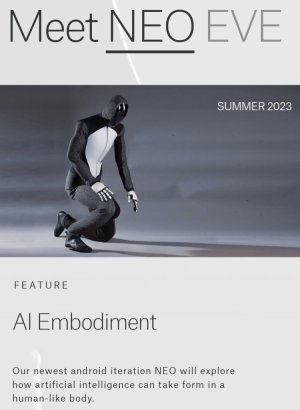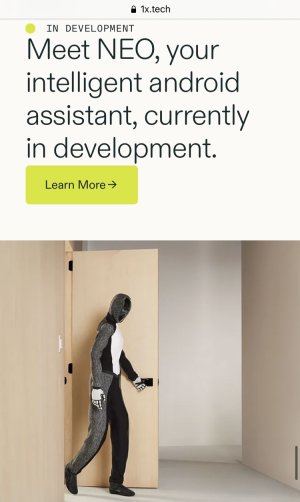

OpenAI will be offering pre-orders on their android assistant known as Neo by the end of this year!
Neo will feature an embodied form of ChatGPT, giving it the ability to learn from its environment and react accordingly in real time. This will be an incredible departure from traditional robots that are pre-programmed to carry out specific tasks without the ability to adjust their behaviour in real time or to changing circumstances.
Neo features a radical departure from traditional humanoid robots by featuring a soft fabric like body that makes it safe to use in households.
Anyone going to place a pre-order when they open later this year?
The Dawn of Embodied AI: OpenAI’s Robot Neo
Artificial Intelligence (AI) has been making waves in various sectors, from healthcare to finance, and now it’s ready to step into our daily lives in a more tangible form. OpenAI, a leading research organization in the field of AI, has announced the development of a new AI-powered robot named Neo.
This article delves into the capabilities and potential applications of Neo
Neo: A New Era of AI
Neo represents a significant leap in the evolution of AI. It’s not just a program running on a computer; it’s an android with a physical body that can interact with the real world. This concept, known as embodied AI, allows Neo to understand its environment in a much deeper way, thanks to the fusion of AI senses and its physical body. Unlike traditional robots that are programmed to perform specific tasks, Neo is designed to continuously learn and improve, becoming smarter and more capable over time. This adaptability is a hallmark of autonomous systems, which are capable of self-governance, self-regulation, and self-execution of tasks based on their internal programming, algorithms, and artificial intelligence.
Capabilities of Neo
Neo is designed to excel in industrial tasks across sectors like security, logistics, and manufacturing. It can operate machinery and handle complex tasks with ease. However, the vision for Neo extends beyond industrial applications. OpenAI envisions Neo providing valuable home assistance, performing chores like cleaning, and offering support to individuals with mobility challenges by fetching items and providing companionship. In addition to its practical applications, Neo also holds potential for research, helping the robotics community explore fields like psychology and artificial intelligence.With Neo’s continuous evolution, the possibilities for assistance, productivity, and learning are boundless.
Neo’s Autonomous Behavior
The autonomous behavior of Neo is a testament to its robust AI system. An autonomous system needs to have decision-making capabilities where it can process information in its environment, assess the current situation, and make decisions based on predefined rules. Neo’s ability to learn from past experiences or data inputs and adjust its behavior or decision-making process accordingly is a testament to its advanced AI capabilities.
Neo’s Mobility and Power
Neo is built on an electrical system and weighs around 30 kilograms or 66 pounds, making it lighter than many of its counterparts. It can walk at around 2.5 miles per hour and run at a speed of 7.5 miles per hour. Its carry capacity is around 44 pounds or 20 kilograms, which is impressive considering its weight.
The Future of Neo
OpenAI has announced that Neo will be open for pre-orders at the end of 2023. This suggests that we are likely to get our first look at this very capable artificial intelligence embodied physical robot backed by OpenAI’s software systems this year.
The rapid rise of artificial intelligence has now progressed to a stage where large language models and multimodal models are being moved into physical robots for the first time.
The deployment of Neo represents a significant milestone in the field of AI. It will be fascinating to see how effectively it is adopted and the impact it will have on various sectors and our daily lives.
Source: https://plainenglish.io/blog/the-dawn-of-embodied-ai-openai-s-robot-neo#neo-a-new-era-of-ai
How does NEO use artificial intelligence (AI)?
Using embodied artificial intelligence, NEO will understand its environment deeper, thanks to the fusion of their AI “senses” and their physical body. NEO continuously learns and improves, becoming smarter and more capable over time.
The more you interact with them, navigating life with NEO will feel natural and intuitive. NEO will understand their own environment and how to handle fragile items, creating seamless collaboration and immersive human-robot interaction.
Official Neo website: https://www.1x.tech/neo

